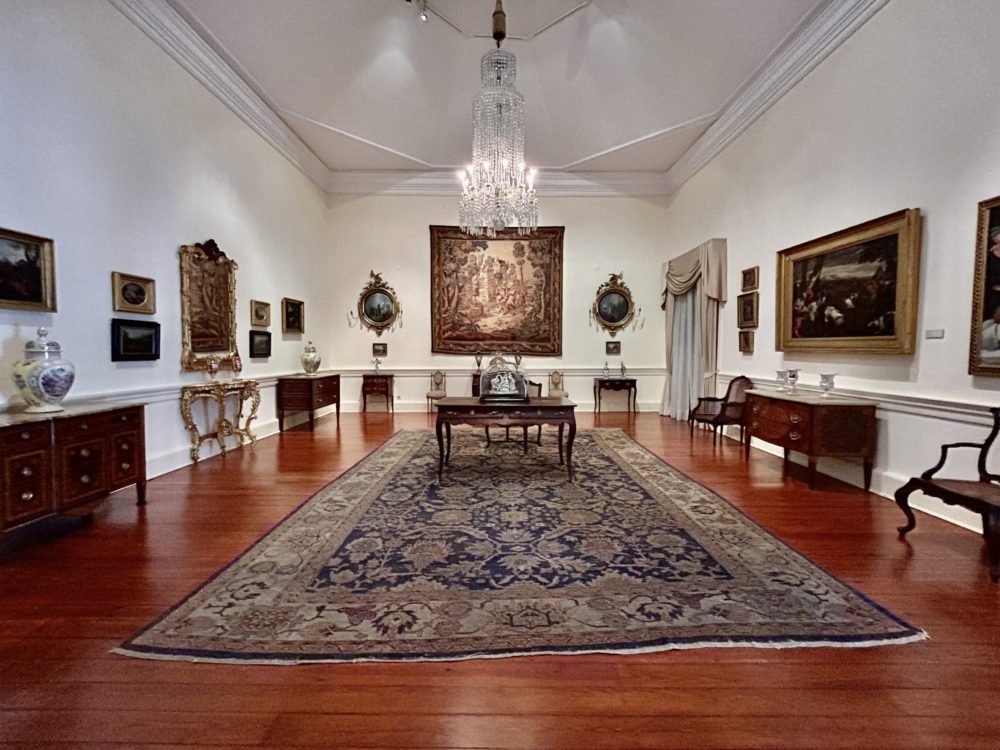Step into the enchanting Decorative Arts Room at Quinta das Cruzes in Funchal, Madeira, and embark on a journey through the evolution of European art and design from the 17th to the 19th centuries. This room is a testament to the rich cultural exchanges and artistic influences that shaped the decorative arts during this period.
French Influence and Imperial Style
As you enter, you are greeted by furniture that reflects the grandeur of the late 18th and early 19th centuries, a time when French influence was particularly strong in Portugal. During the reign of Queen Maria I (1777-1816), the Imperial style became prominent, characterised by its elegant and straight lines. This style is beautifully depicted in the chests of drawers, support tables, and a pair of golden chairs that exude sophistication and refinement.
Elements of the Past
The room also pays homage to earlier artistic styles. The pier table and console with a mirror feature golden notches adorned with vegetal elements, acanthus leaves, and volutes, showcasing the intricate craftsmanship of previous eras. These elements create a harmonious blend of old and new, illustrating the transition in design aesthetics over time.
English Influence
The seated furniture in the room highlights the enduring influence of English design. Various types of caned seat chairs are displayed, each representing the timeless elegance and functionality that English furniture is known for.
European Paintings
The walls of the room are adorned with a stunning collection of European paintings that trace the evolution of art from the 17th to the 19th centuries. On the left, you will find oil paintings attributed to the circle of Jacques Callot (1592-1635), depicting episodes from the Old Testament such as “The Bronze Snake” and “The Adoration of the Golden Calf.” These are complemented by a 19th-century battle scene from the French school.
At the center, devotional paintings take pride of place. Notable works include “Apanha do Maná” (Gathering of Manna), attributed to the circle of Jacopo Bassano, and the “Virgin of Loreto” (or Virgin with Child and Saint Joseph), an exquisite piece inspired by Raphael’s “Madonna del Velo.”
Opposite these, a series of country life paintings capture the bucolic charm of rural scenes. Highlights include “Pastoral Scene” and “Landscape with Satire,” both attributed to Giovanni Benedetto Castiglione (1609-1664), and two tempera landscapes by Claude Lorrain (1600-1682), known for his masterful depiction of light and atmosphere.
#ArtHistory #DecorativeArts #FrenchInfluence #EuropeanPainting #QuintaDasCruzes













